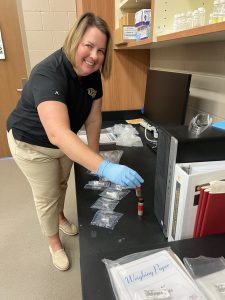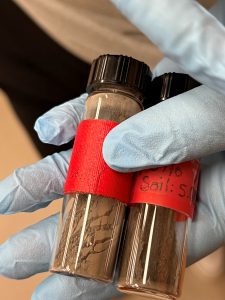Decades-Old Moon Samples Inform Modern Return to Moon

By NIKITTA CAMPBELL
Exploring an area in the Moon that was never visited before?
That’s one of the tasks that Department of Physics planetary scientist and Assistant Professor Kerri Donaldson Hanna, Ph.D., has assisted NASA with since 2013.
Donaldson Hanna and her team play a vital role in studying samples collected by the Apollo astronauts and returned to the Earth to learn more about the Moon. The most recent samples received in Donaldson Hanna’s lab are rich in iron and titanium and contain small amounts of volcanic glass beads.
She said understanding the geologic history and evolution of lunar samples —especially those collected by the Apollo astronauts in the 70s —is of paramount importance. In the same way rocks on Earth explain our planet’s origins, lunar rocks tell the story of its origins.
According to Donaldson Hanna, orbital data has already provided a tremendous amount of data and will continue to inform upcoming missions. The Lunar Trailblazer, for instance, will provide high-resolution images of the Moon’s surface on the tens of meters scale. 
The study of the regolith samples from the Moon continues to yield useful information. It’s also guiding where future Moon missions like Artemis should land and collect samples, including the south pole of the Moon. Donaldson Hanna personally wants to examine samples from the highland terrain on the far side of the Moon.
“It is unlike anything that we have in our Apollo collections. It’s also the original crustal formation of the Moon,” she said. “Solving these mysteries are an exciting opportunity.”
